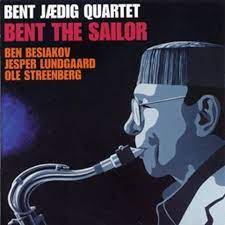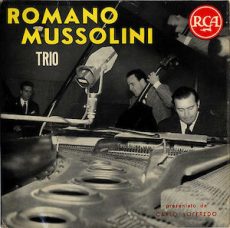
Daily Dose Of Jazz…
Ami Nakazono was born on October 6, 1986 in Kagoshima, Japan and began classical piano lessons at the age of 4. By 12 she was playing the alto saxophone and joined her school brass band. After two years, she won the “City Solo Instrumental Competition.” At the same time she was offered a full scholarship to study music at Fukuoka Daiichi High School in Fukuoka, Japan, where she studied classical music, theory, ear training, harmony, and brass band skills.
After graduation, she entered Senzoku Gakuen University, Japan’s most prestigious university, with a jazz major. During this time, Ami formed her own band and began playing gigs in and around Tokyo, Japan. Again two years later in 2007 she accepted a scholarship from Berklee College of Music, moved to Boston, Massachusetts and continued to perform and study under Walter Beasley, Dino Govoni, Bill Pierce, Shannon LeClaire and Jeff Harrington, and flute with Mia Olson. In 2008 with mentor and inspiration George W. Russell Jr., the two worked on several collaborations during this period at Berklee.
Nakazono began performing internationally with the acclaimed band, Violette, headed by French jazz singer~songwriter Violette De Bartillat. In 2010 she recorded for two critically praised albums, Joie de Vivre with Violette and Shine with George W Russell Jr.
Saxophonist Ami Nakazono is currently an active member of Boston’s entertainment group Raw Ambition and continues to perform at prestigious venues and festivals across the United States.
More Posts: bandleader,history,instrumental,jazz,music,saxophone

Daily Dose Of Jazz…
Bob Reynolds was born in Morristown, New Jersey on September 29, 1977. His family moved to Jacksonville, Florida where he started playing saxophone at age 13. Attending high school at Douglas Anderson School of the Arts he became part of the well-known jazz band. After graduating, he attended Berklee College of Music where he studied with George Garzone and Hal Crook.
He played with John Mayer’s band for five years, then worked with Brian Blade, Aaron Goldberg, Gregory Hutchinson, and Tom Harrell. A solo recording artist since the turn of the century, his 2006 album Can’t Wait for Perfect was voted Best Debut in the Village Voice jazz poll.
As a member of the popular genre-bending instrumental group Snarky Puppy since 2014, he has won Grammy Awards with the band for the albums Culcha Vulcha and Live at the Royal Albert Hall.
Tenor saxophonist Bob Reynolds has received four ASCAP Young Jazz Composer awards, and Berklee’s Billboard Magazine Endowed Scholarship, and continues to performa and record.
More Posts: bandleader,history,instrumental,jazz,music,saxophone

Daily Dose Of Jazz…
Bent Jædig, born September 28, 1935 in Copenhagen, Denmark. He first studied clarinet before playing saxophone. In the 1950s, he settled in Germany and led a band with trombonist Rudi Fuesers, later joining another band with trombonist Peter Herbolzheimer in Munich, Germany.
By the 1960s, he returned to Denmark and worked with trumpeter Allan Botschinsky and pianist Bent Axen, with whom he recorded for Denmark’s Debut label. Bent would go on to play with the Dollar Brand Quintet which included Don Cherry. As a side-man he was constantly in demand and worked with Tete Montoliu, Jimmy Woode, Philly Joe Jones/Dizzy Reece, and Louis Hjulmand.
Jædig recorded his first album as a leader in 1967 titled, Danish Jazzman, with Axen, Botschinsky, Dusko Goykovich, Niels-Henning Ørsted Pedersen and Alex Riel. He would later form a trio, played in a duo and recorded live shows in 2002 which were compiled for a release from Timeless Records.
In the Seventies and 1980s he worked with Wild Bill Davison, Art Farmer, Stan Getz, the Thad Jones Big Band, Duke Jordan, Horace Parlan, Sahib Shihab, and Ernie Wilkins Almost Big Band. He was also a member of the Erling Kroner Tentet, played in the Danish Radio Big Band, and recorded on the Miles Davis album Aura. In 1987, Jædig was a member of Pierre Dørge’s New Jungle Orchestra.
At the end of the 1990s he was performing in a quintet. Tenor saxophonist and flutist Bent Jædig transitioned on June 9, 2004. Saxophonist Charles Davis recorded the album Charles Davis Plays the Music of Bent Jædig in 2006.
More Posts: bandleader,flute,history,instrumental,jazz,music,saxophone

Daily Dose Of Jazz…
Romano Bruno Mussolini was born on September 26, 1927 in Villa Carpena, Forlì,Italy. He was the fourth child and youngest son of Il Duce, Benito Mussolini. He studied music as a child, playing classical pieces with his father on the violin. After World War II, he started playing jazz under the alias Romano Full.
By the mid-1950s, he formed a trio and in 1956 released a self-titled record featuring Lilian Terry on vocals and trumpeter Nunzio Rotondo on RCA Records. The Sixties saw him form the Romano Mussolini All Stars, which became one of Italy’s foremost jazz bands.
The All Stars recorded a well-received record Jazz Allo Studio 7 in 1963 with At the Santa Tecla following a year later. Romano’s band toured internationally with Dizzy Gillespie, Duke Ellington, Helen Merrill and Chet Baker, among others. In the 1990s he recorded two more albums, Perfect Alibi and Soft and Swing.
His playing style has been described as “like a slightly melancholic Oscar Peterson. Occasionally inspired, he was always efficient; he made the refrains run on time.
Pianist Romano Mussolini, who was also a painter and film producer, transitioned on February 3, 2006, at the age of 78, in a hospital in Rome, Italy from heart problems.
More Posts: bandleader,history,instrumental,jazz,music,piano

Daily Dose Of Jazz…
Samuel “Savoirfaire” Williams was born on September 22, 1973 in Chicago, Illinois. At the age of three he began playing violin at his parents’ church and two years later joined a group of child prodigies under the tutelage of Suzuki Violin instructor, Betty Haag. His first performance was at Chicago’s Orchestra Hall during a public television broadcast which became an annual event spanning more than 35 years.
He attended the Merit School of Music in Chicago, studying music theory while participating in youth orchestras including the City Youth Symphony, Chicago Youth Symphony Orchestra, Protégé, All-City and All-State. He took private lessons from Afro-Panamanian musician Joseph Williams when he was 16. During this time he played lead for the City Youth String Ensemble’s viola section, then received a scholarship at Interlochen where he sat in with vibraphonist Milt Jackson.
Meeting and performing with Wynton Marsalis while working at the Chicago Symphony Center, Williams continued his studies and busked on the streets to pay for violin lessons. During one of his street performances, guitarist Kenny Burrell observed his skill and invited him to collaborate with himself, Willie Pickens and Larry Gray on a Bebop performance at Chicago’s Jazz Showcase.
In 2000, he was voted into the Chicago Chapter of the Association for the Advancement of Creative Musicians (AACM), which earned him the moniker “Savoirfaire.” That same year, he began an apprenticeship with luthier Martin Sheridan to learn the art of violin-making, later owning the violin shop and managing it for three years.
After self-releasing three live albums, Bob Koester discovered his work and in 2004 Delmark Records produced the internationally acclaimed release Running Out of Time. Over the years, Savoirfaire has been invited to record with a plethora of artists in various genres and at international Jazz festivals.
In 2015, Williams founded the Chicago Gypsy Project with guitarist Dave Miller and bassist Charlie Kirchen. He continues to perform with his group Savoirfaire Jazz Quartet as well as busking on the streets, and in various venues throughout Chicago.
More Posts: bandleader,history,instrumental,jazz,music,violin



